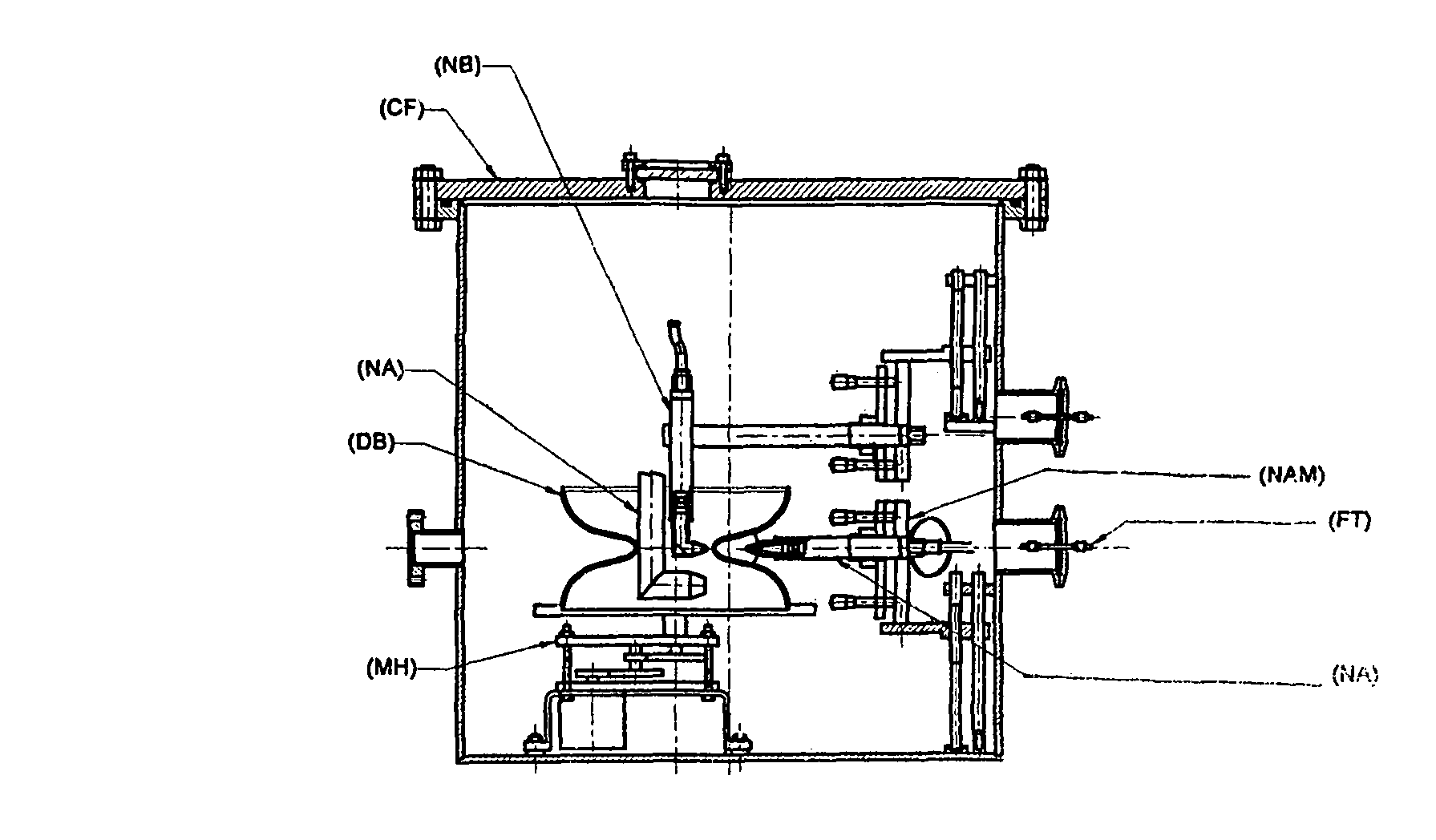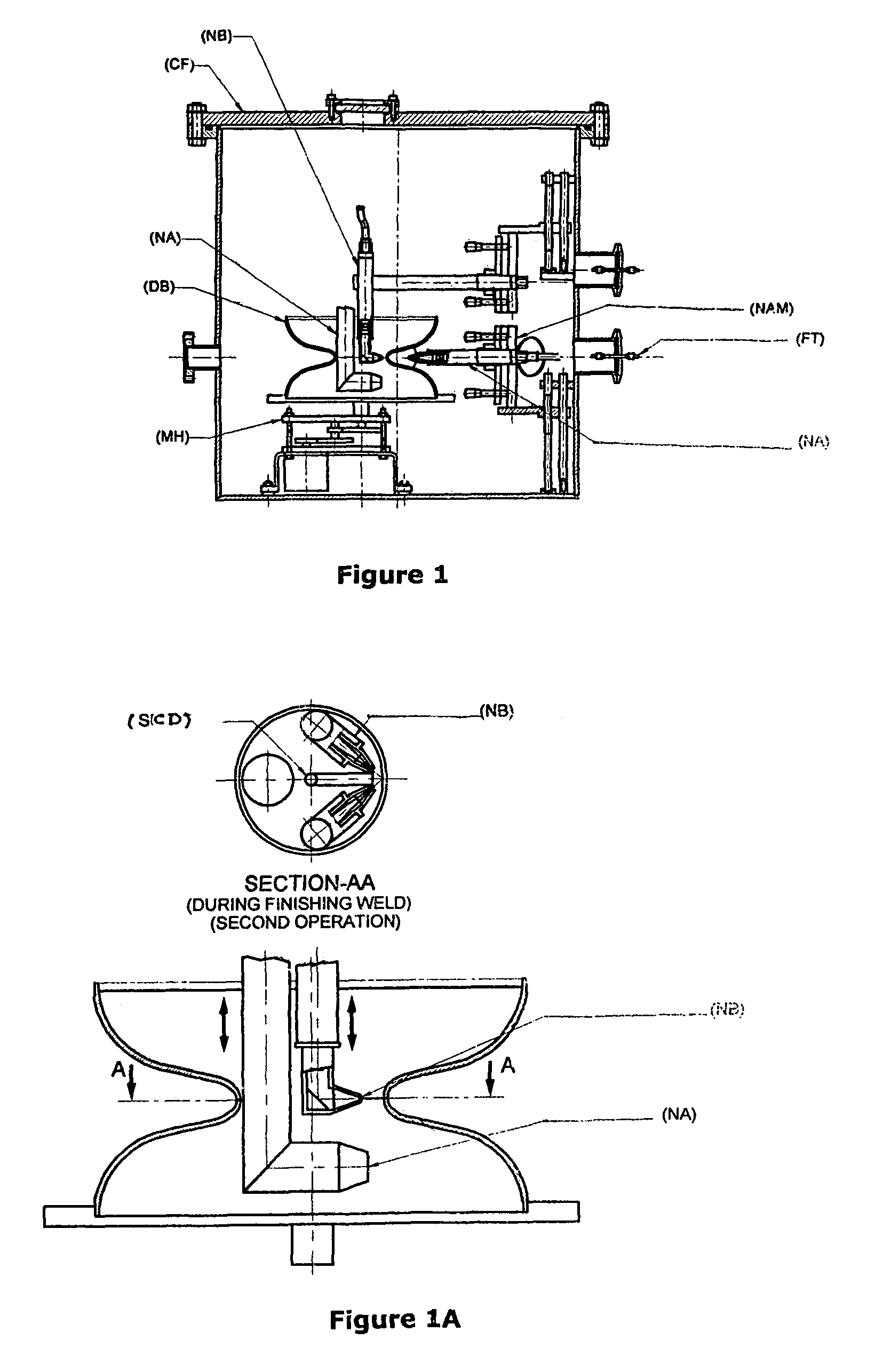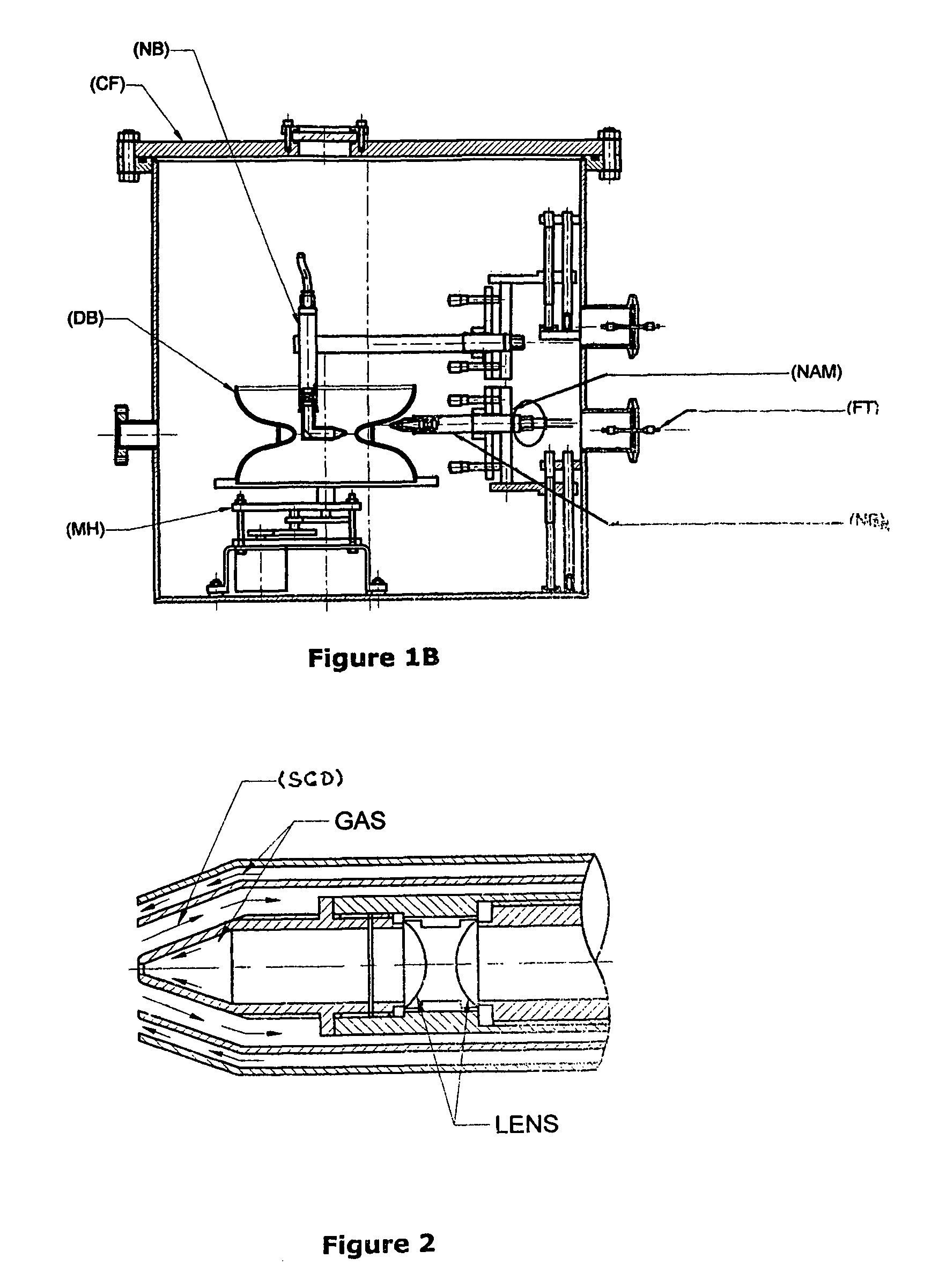The
present day technology for manufacturing of these SCRF cavities is highly complex and expensive.
Most of the SCRF cavities are presently made from bulk
niobium material involving a fabrication process, which is exorbitantly costly and complex.
Conventional EBW process used for fabrication of the SCRF cavities suffers from following drawbacks:a) It is an expensive process as it has to be performed in vacuum and the
Capital cost of the EBW
machine is very high.b) Chemical
etching required before every
electron beam welding operation is an expensive and hazardous operation, which, needs to be minimized, if not eliminated.c) In order to weld intricate joints, complicated manipulation of
electron beam or parts to be welded is required.
Hence intricate joints are difficult to make with this process.
Joints made in SCRF cavities with EB welding, cause significant amount of mechanical
distortion and shrinkage.
It has also been experienced in the art that to weld Nb components for SCRF cavity having high thickness (1 mm or above), the energy deposited per unit time is high in case of EBW and as a consequence the possibility of
distortion or shrinkage is high.
Moreover, weld joints located in the
RF field region of the SCRF cavity require extremely
smooth surface finish, since presence of any sharp points on
weld bead can cause field emission.
This is difficult to achieve with existing
high energy EBW weld process consistently, which causes detrimental effects on performance of SCRF cavities so fabricated.
The existing EBW weld process does not also provide on-line, means for inspection of weld fit up, progress and finished
weld bead.
The
electron beam
welding process as being applied today makes it necessary that weld operations are carried out in many settings and hence vacuum has to be broken many times which means more time and cost.
Also the existing weld systems and methods applied in the SCRF cavity fabrication do not suggest any method for removal of evaporating
plasma material due to electron beam material interaction from weld surface and a method for smoothening for the intricate weld joints in precise weld set-up for the SCRF cavity.
The existing EBW
welding process applied for fabrication of the Niobium components of the SCRF cavity is thus expensive, low in productivity and consistency in weld quality for Nb components.
It was further mentioned under the said prior art that if the thickness of the
superconducting material was smaller than 0.1 mm, the strength of the resulting superconducting accelerating tube was too low and the wall of the tube would be too thin for satisfactory laser welding and if the thickness of the
superconducting material was greater than 1 mm on the other hand, the
thermal conductivity was low and inevitably therefore the
cooling efficiency obtained during the use of the superconducting accelerating tube was low.
Hence the said prior art on laser welding could not be applied in the industry which is manufacturing superconducting cavities.
It would also be clearly apparent from the above state-of-the-art that while the
present day requirement of Nb based SCRF cavity fabrication requires a wall thickness of 2 mm and above, the laser welding of less than half the depth and up to 1 mm wall thickness proposed in the U.S. Pat. No. 5,239,157 was not sufficient to provide for weld joints with desired strength and other characteristics for Nb based SCRF cavities.
In particular attempting to achieve greater depth of welding beyond the less than half depth of even less than 1 mm thickness attempted and proposed in the US involving
higher power lasers would have invariably resulted in serious failure of the weld joints in terms of high HAZ, large weld distortion and shrinkage.
Above all, the intricacies and weld finish coupled with strength, smoothness of
weld bead that is required in particular for the
RF field region of the SCRF cavity, needed to be met by proper selection of process and equipments, designing of the weld process and optimization of parameters thereof to achieve economy, attaining user-friendly provisions for such laser welding of SCRF cavity joints have been the challenging constraints to adopting laser weld technique for such fabrication of Nb based SCRF cavities.
 Login to View More
Login to View More 


